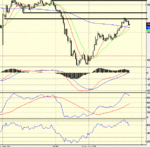anyway back to the thread title....
1)I just read some more of the previous posts and is seems that Elliott Waves are not classed as a Technical indicator? I understand why it might be considered a non indictaor method but imo its is just another representation of price. So I just wondered why some view it as different to say a Macd?
2) Also there seems to be alot of use of cycles and reversal times these days. ( I use them) but again I wonder why they to some are treated as more reliable than say an RSI when its oversold? I would suggest that they would perform equally aswell....
3) TA provides a secondary advantage that price only traders dont have maybe?
Price approaches resostance but there are 3 lots of resistance 15 points btween each...get it wrong and you are 30 points out of pocket...so could be expensive. So how would price only traders manage that sort of exit? Note macd at zero, RSI oversold, restest if 1 day ma for TA secondary reasons to go with the primary resisance?
1)I just read some more of the previous posts and is seems that Elliott Waves are not classed as a Technical indicator? I understand why it might be considered a non indictaor method but imo its is just another representation of price. So I just wondered why some view it as different to say a Macd?
2) Also there seems to be alot of use of cycles and reversal times these days. ( I use them) but again I wonder why they to some are treated as more reliable than say an RSI when its oversold? I would suggest that they would perform equally aswell....
3) TA provides a secondary advantage that price only traders dont have maybe?
Price approaches resostance but there are 3 lots of resistance 15 points btween each...get it wrong and you are 30 points out of pocket...so could be expensive. So how would price only traders manage that sort of exit? Note macd at zero, RSI oversold, restest if 1 day ma for TA secondary reasons to go with the primary resisance?
Attachments
Last edited:

